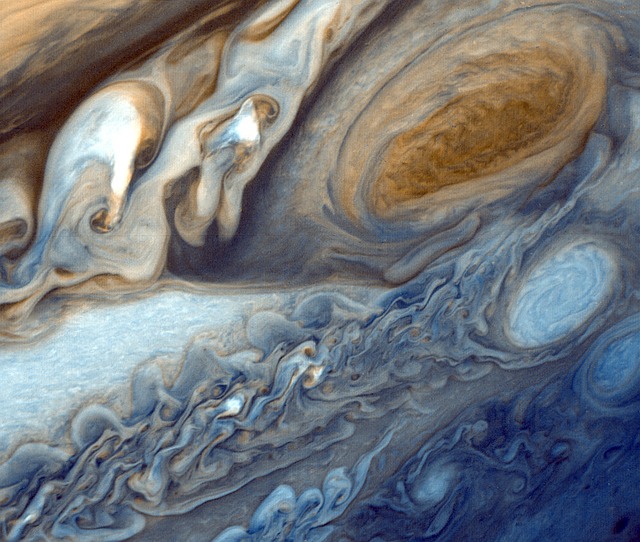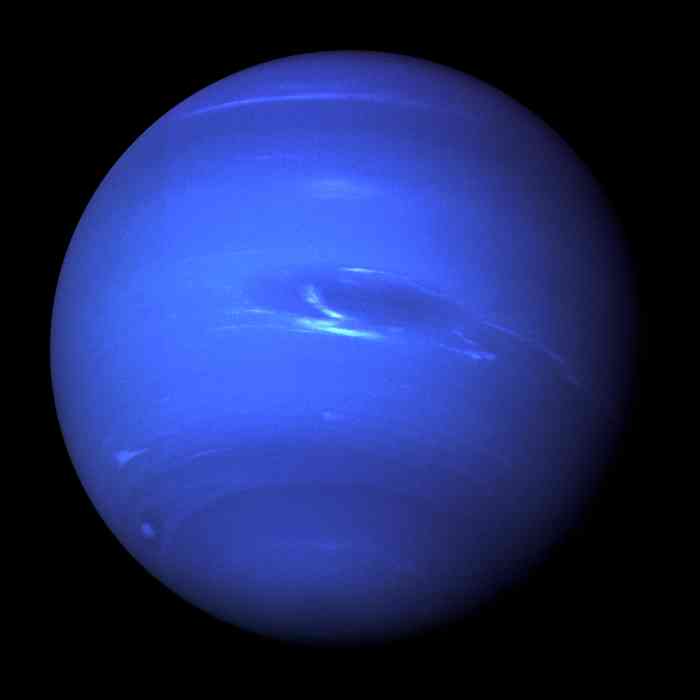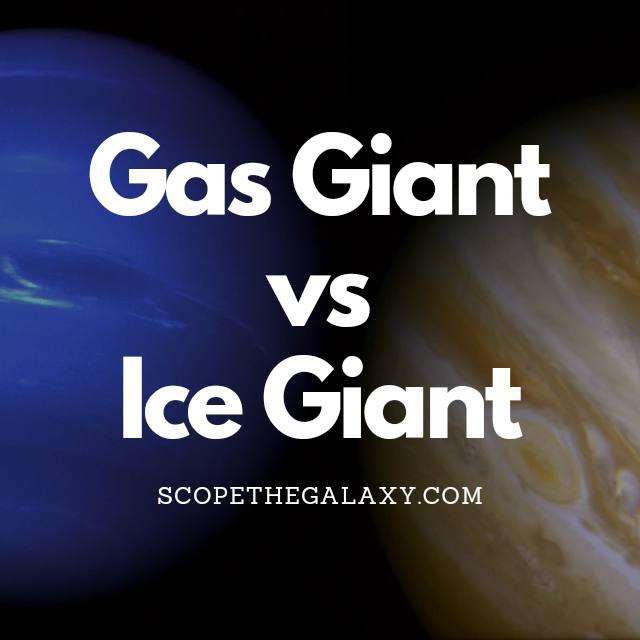*This post may contain affiliate links. This means we may make a commission if you purchase an item using one of our links*
Little is known about the outer planets in our solar system, but astronomers have been able to classify them as gas giants or ice giants.
While both gas and ice giants are large planets containing the dominant elements of helium and hydrogen, they differ in atmospheric composition. Ice giants also have ammonia, water, and methane which freeze into solid ice. On the other hand, gas giants remain completely gaseous around a small solid core.
In this article, we will review what makes up a gas giant and what makes up an ice giant. We will also cover the similarities and differences between gas and ice giants.
What Is a Gas Giant?
Table of Contents

Gas giants are extremely large planets that have a super dense solid core surrounded completely by the gaseous forms of helium and hydrogen. In our solar system, Jupiter and Saturn are the gas giants and make up the largest planets in the system.
The mantles of their core are composed of metallic hydrogen and although Saturn and Jupiter are fairly cold, others can be much hotter. Jupiter and Saturn are two of the farthest planets away from the sun. However, other gas giants are closer to the stars they orbit and can have climates that reach thousands of degrees.
This sets gas giants apart from ice giants which need cold temperatures to maintain their namesake ice form. On the other hand, gas giants can remain gaseous whether their temperatures are hundreds of degrees below zero or thousands of degrees above.
What Is an Ice Giant?

Ice giants are located farther away from the sun than gas giants and also have a dominant composition of helium and hydrogen. However, they also have other elements like carbon, sulfur, nitrogen, and oxygen which combine to form compounds that can freeze into solid phases.
Since these planets are located farther from the sun than gas giants, they do not benefit from its warmth, and their surfaces are completely frozen. The ice giants in our solar system are Neptune and Uranus.
The blue color of the ice planets is due to the methane in their atmospheres. The compounds made of the extra elements in their atmospheres such as water, methane, and ammonia are integral to the differences between ice and gas giants.
Similarities Between Gas and Ice Giants
Both gas and ice giants are planets so they obey the laws of planetary physics by orbiting the nearest star and possessing enough gravity to form a sphere. Both gas and ice giants are predominantly composed of the first two elements on the periodic table – hydrogen and helium.
Despite being the farthest planets away from the sun, both gas and ice giants have hot upper atmospheres due to the energy from their global wind systems.
Both types of planets have dense hydrogen cores and although their atmospheres are very different, neither gas nor ice giants are habitable to human beings. Both gas and ice giants can be found within our solar system as well as in systems outside of ours.
Since both gas and ice giants are composed of such light elements, they tend to attract dust particles that orbit them in a ring. Some rings of large and obvious like those of Saturn while others are less noticeable but still present like those of Neptune.
Both gas and ice giants are planets large enough to have moons orbiting them. Their gravitational fields attract smaller moons that pull them into the planetary orbit.
Differences Between Gas and Ice Giants
Although gas and ice giants are both mostly made of hydrogen and helium, the amount of each element is vastly different between the two. Gas giants are completely made of the two elements while ice giants also contain other elements such as carbon, sulfur, oxygen, and nitrogen.
Because of the extra elements in ice giants, they have less hydrogen and helium than gas giants. These extra elements also combine to form compounds such as water, methane, and ammonia which affect the phase of the planet’s surface.
Gas giants have a surface that is completely made of gas surrounding the dense hydrogen core. Ice giants have a solid surface made of frozen compounds from the extra elements found on the planet.
Summary
Gas giants and ice giants are both large planets and both types can be found inside and outside our solar system. Jupiter and Saturn are classified as gas giants, while Neptune and Uranus are classified as ice giants. Gas giants can have hot or cold surface temperatures while ice giants are always cold. Both, however, have hot upper atmospheres.
Both gas and ice giants are dominantly comprised of hydrogen and helium. Gas giants have more of the two basic elements thought and ice giants have additional elements such as oxygen, sulfur, carbon, and nitrogen.
As their names imply, gas giants do not have a solid surface but rather a gaseous composition surrounding the dense hydrogen core. Ice giants have a surface made of ice as the frozen compounds of the extra elements create a solid surface.
Both gas and ice giants can have rings made of dust and other light particles that orbit the planet. They are also large enough to have moons of their own. Gas and ice giants are fascinating planets, but human life cannot exist in either of their environments. For now, we must study them from afar.
References
https://exoplanets.nasa.gov/what-is-an-exoplanet/planet-types/gas-giant/
https://astronomy.com/magazine/ask-astro/2019/06/why-do-astronomers-call-uranus-and-neptune-ice-giants
https://www.sciencedaily.com/releases/2020/04/200406190444.htm

